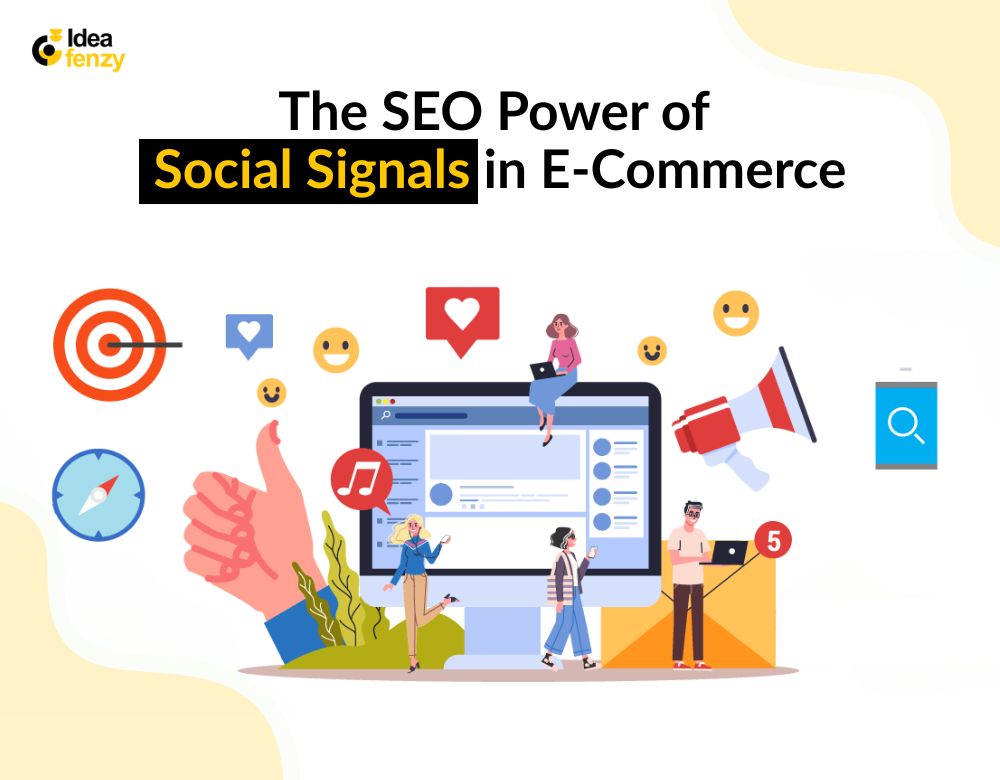In today’s highly competitive e-commerce landscape, search engine optimization (SEO) is no longer just about keywords, backlinks, and on-page strategies. Social signals have become a powerful yet often overlooked factor that significantly influences a website’s search engine ranking and overall online visibility. Let’s dive into the power of social signals in e-commerce
Whether you run a small online store or a large e-commerce platform, understanding and leveraging social signals can give you a competitive edge. In this blog, we’ll explore how social signals impact e-commerce SEO, why they matter, and how you can effectively incorporate them into your marketing strategy.
What Are Social Signals in SEO?
Social signals refer to the collective social media activity surrounding your e-commerce website. This includes likes, shares, comments, mentions, and overall engagement on platforms like Facebook, Instagram, X (formerly Twitter), LinkedIn, and Pinterest.
While Google doesn’t officially confirm social signals as a direct ranking factor, studies indicate a strong correlation between social engagement and higher search rankings. More importantly, increased social activity boosts your brand’s visibility, generates referral traffic, and enhances content authority.
The Impact of Social Signals on E-Commerce SEO
1. Boosts Brand Authority and Trust
When your content is widely shared and discussed on social media, it signals relevance and authority to search engines. The more people engage with your e-commerce brand, the more credible it appears.
For example, if your product posts consistently receive hundreds of shares and comments, it indicates that your content is valuable and worth promoting. Search engines take note of this popularity, which can indirectly enhance your SEO performance.
2. Increases Website Traffic
Social signals play a vital role in driving referral traffic to your e-commerce store. When users share your product pages or blog posts, their followers are more likely to click through, resulting in increased website visits.
More traffic leads to:
- Lower bounce rates (if the content is relevant and engaging)
- Higher session durations
- Improved user behavior metrics — all of which contribute to better SEO rankings.
👉 Need help driving consistent traffic to your e-commerce website? Check out our SEO services at Ideafenzy to boost your online visibility.
3. Improves Content Indexing
Frequent social media activity helps search engines discover and index your content faster. When you share new product launches, blog posts, or offers, the increased activity around these links accelerates their crawling and indexing by search engines.
4. Enhances Link-Building Opportunities
High-performing social content often attracts backlinks from other websites. When bloggers, influencers, or industry experts see your content gaining traction, they are more likely to reference or link to it. This enhances your website’s domain authority and improves SEO rankings.
How to Leverage Social Signals for E-Commerce SEO Success
1. Optimize Your Social Profiles
Your social media profiles are extensions of your e-commerce website. To maximize their SEO impact:
- Use consistent branding across platforms.
- Add your website link in the bio and posts.
- Include relevant keywords in your profile descriptions.
- Encourage followers to visit your website by sharing call-to-action (CTA) posts.
2. Share High-Quality, Shareable Content
Content that resonates with your audience is more likely to generate social signals. Share a mix of:
- Product tutorials and demos
- Customer testimonials and reviews
- User-generated content (UGC)
- Informative blog posts, like our recent guide on how to grow your business with SEO in 2025
3. Leverage Social Proof and User Engagement
Encourage customers to share their experiences with your e-commerce brand. You can:
- Ask for tagged reviews on social media.
- Run hashtag campaigns.
- Repost customer stories and experiences.
This not only increases social signals but also builds trust and credibility among potential buyers.
4. Use Social Sharing Plugins on Your Website
Make it easy for visitors to share your content by integrating social sharing buttons on product pages, blog posts, and checkout pages. The more shareable your content, the greater its reach and potential to generate social signals.
5. Run Social Media Ad Campaigns
While organic reach is important, paid social campaigns can amplify your content’s visibility. Promote your best-performing blog posts, products, or offers through targeted ads to increase shares and engagement.
Social Signals vs. Traditional SEO: The Winning Combination
While social signals alone won’t guarantee top search rankings, they significantly complement your existing SEO efforts. By combining traditional SEO strategies (like link building and content optimization) with a strong social presence, you create a well-rounded digital marketing strategy.
💡 At Ideafenzy, we specialize in comprehensive SEO services that incorporate social media marketing to drive sustainable growth for e-commerce businesses. Our team ensures your content gains maximum visibility through strategic promotion and optimization. Discover how our private label SEO services work in 2025 and take your e-commerce business to the next level.
Conclusion: Boost Your E-Commerce SEO with Social Signals
Incorporating social signals into your e-commerce SEO strategy is no longer optional—it’s essential. From building brand credibility to driving traffic and enhancing content visibility, social signals play a crucial role in boosting your online presence.
To fully leverage the power of social signals, focus on:
- Creating share-worthy content
- Engaging with your audience on social platforms
- Integrating social sharing options on your website
- Running targeted social media campaigns
By doing so, you’ll not only enhance your SEO performance but also establish a stronger, more recognizable brand in the e-commerce space.
Ready to take your e-commerce SEO to the next level? Contact Ideafenzy today and let us help you drive consistent growth through effective SEO and social media strategies.

